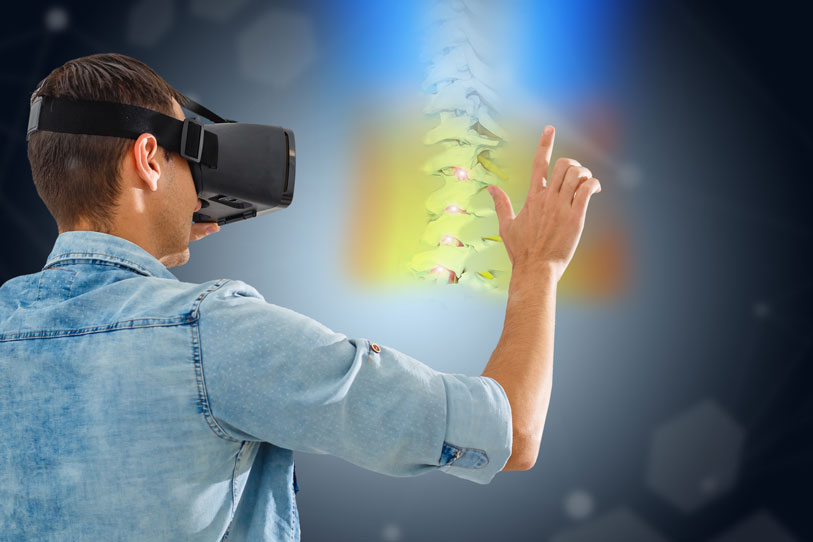Orthopedic devices are a significant part of improving the health of patients with musculoskeletal conditions or those affecting the joints, bones, tendons, ligaments, and muscles. Due to recent technological advancements, there’s been a notable improvement in the devices used in orthopedic treatment.
The medical device arena is large, complex, and competitive. Given this, healthcare institutions and professionals need to keep up with the innovations in orthopedic devices. For example, advanced medical splint options offer greater durability, support, and flexibility than traditional splints.
Adopting medical and orthopedic devices that make use of innovative technologies reduces the cost of medical procedures, improves patient care, and gives healthcare facilities a competitive advantage.
The following are other device trends you should watch out for:
1. Telemedicine
Remote monitoring of orthopedic patients is advantageous because it minimizes their movement and the risk of further injuries. Telemedicine helps a physician perform health checkups for patients who can’t or don’t want to come to a medical facility for checkups.
This remote monitoring of patients is made possible by medical device industry leaders that use innovative technologies to manufacture at-home or portable medical devices that measure vital signs, such as blood pressure, blood oxygen levels, blood sugar, heart rate, temperature, etc.
The benefits of telemedicine include the following:
- Makes pediatric cases, postoperative, and fracture follow-ups cost-effective
- Increases patient care access
- Improves patient satisfaction
Also, telemedicine allows patients to book their appointments online, avoid long queues, receive their medical records online, and make payments conveniently using mobile channels.
2. Wearable Health Devices
Wearable health devices (WHD) are the current thing for many people. It helps in tracking individual fitness and health parameters. Over the years, these devices have become more precise in monitoring vital signs. In light of this, the orthopedic department can leverage such devices and even recommend them to their patients. WHD can give real-time data on patients, especially those who need close monitoring as part of preoperative and postoperative care.
Essentially, the wearable health device allows patients to communicate the data related to their care remotely. This is a safer and more convenient option as it doesn’t require them to be physically present in the hospital.
3. Augmented Reality
The medical field has also adopted the use of augmented reality (AR). By creating learning scenarios, AR helps orthopedic surgeons approach complex and risky procedures. In addition, AR devices offer surgeons the following:
- Better Surgical Navigation: AR has a real-time mode that allows surgeons to have a clear view of the surgical area. The movements of the instruments are computer guided and hence, more accurate.
- 3D Fluoroscopy: This AR technology provides doctors with better and selected visuals of many anatomical views in the surgical room without having to move the patient.
- Training And Planning For A Procedure: AR technology gives doctors a surreal training field when preparing for an orthopedic procedure. With the help of virtual surgical systems, the pre-plans can be mapped out, thus minimizing the errors and completion time. This pre-planning reduces deviations during the actual surgery, making procedures safer and likely to produce effective results.
4. Robotics
The robotic arm is being increasingly used in orthopedic surgeries because of improved accuracy. It can perform surgeries that are difficult for a human surgeon. With the aid of such devices, hospitals can seamlessly perform complicated surgeries like hip and knee replacements.
Also, in orthopedics, robotic-assisted surgeries can help surgeons perform knee arthroplasty. The robotic arm will help perform surgeries with great precision in less time, reducing the overall patient healing span and pain. Remember, robotics offers minimally invasive surgeries, which helps in spinal surgeries that are usually very risky.
5. 3D Printing And Smart Implants
In orthopedics, 3D printers have become essential tools in creating implant prototypes. Hospitals can use these models in the pre-planning stages to help the surgeon visualize the bone and get a detailed look at the problem. 3D printing devices give surgeons models of deformities and fractures. Also, the printer can give a reverse image which helps the surgeon shape the bone grafts in surgery.
Implants made from metal 3D for different joints are fast gaining traction because medical specialists can make them patient-specific and a perfect fit for them. Such devices will increase patient traffic because of quality services and modern technology.
Furthermore, 3D printed implants are created quickly and at lower costs than conventional implants. This makes such implants a cost-effective option for patients.

Conclusion
The above advancements in orthopedic devices offer healthcare facilities a chance to derive value. The trends reshape healthcare services, making patients more engaged in their treatment process. Furthermore, they make patient care more personalized and tailored to fit individual needs. Technology is a significant part of these trends and will continue to be a primary driver in the overall advancement of the orthopedic market.


















